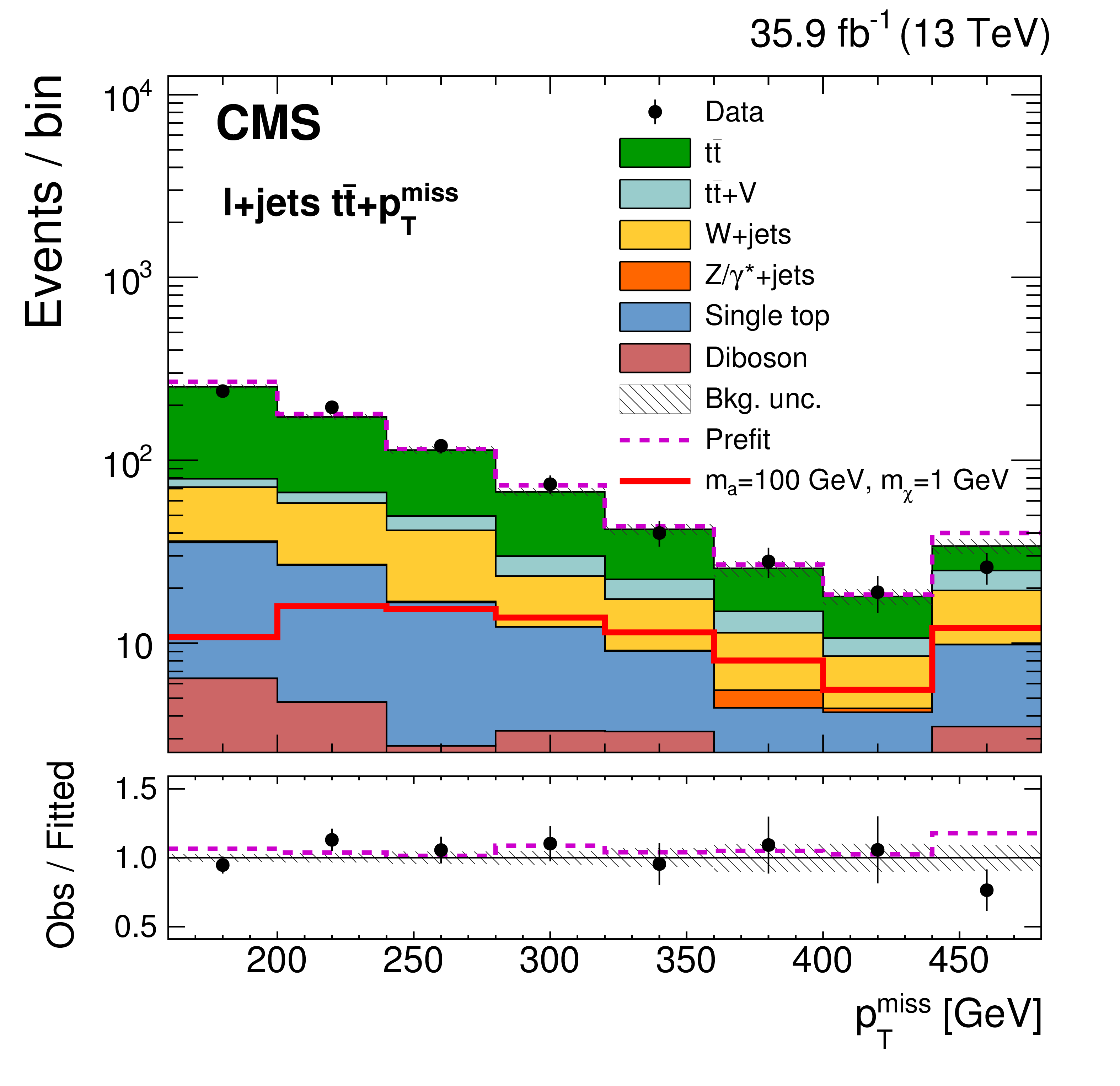Dark matter
Dark matter is estimated to account for about 23% of the total mass-energy of the universe, and to be five times more abundant than known matter. While the existence of dark matter is inferred from astrophysical observations, there is very little information about its nature or how it interacts with ordinary matter. The LHC might be able to produce dark matter particles and provide a unique testing ground. In 2015, our group pioneered the measurement by searching for dark matter in association with top quarks, the preferred process in some dark matter scenarios. The group led the publication of several results of the search for dark matter produced with top quark pairs using 8 TeV and 13 TeV proton-proton collisions in different top quark decay signatures [DM, DM2, DM3 D.Pinna-PhDThesis]. We’ve proposed to enhance the sensitivity of this analysis by including the single-top quark production [DM4] and have produced results with partial Run 2 CMS data [DM5].
We have performed the first search for low-mass dijet resonances in events with three resolved jets at the LHC using a special data-taking technique, known as "data scouting" in order to have the lowest possible trigger thresholds. The usage of data scouting and of the three jet selection enabled this search to set 95% CL exclusion limits based on the interpretation of a dark matter vector mediator coupling only to quarks [DM6].

